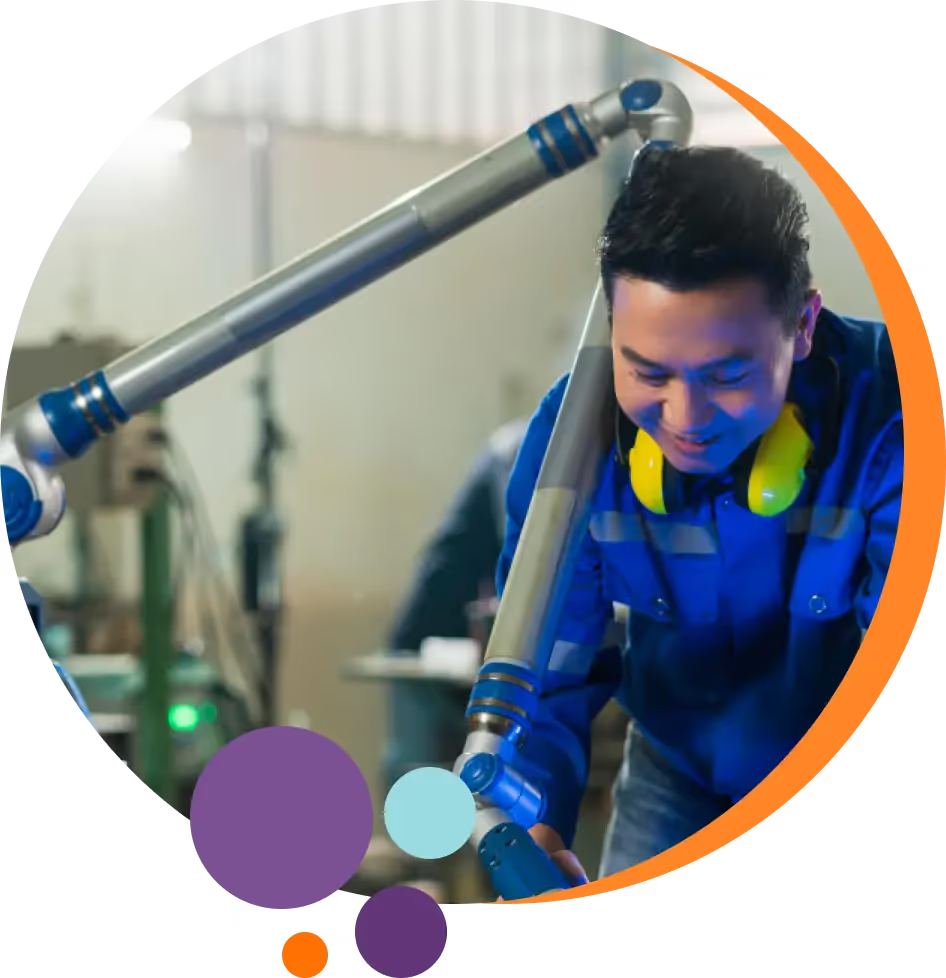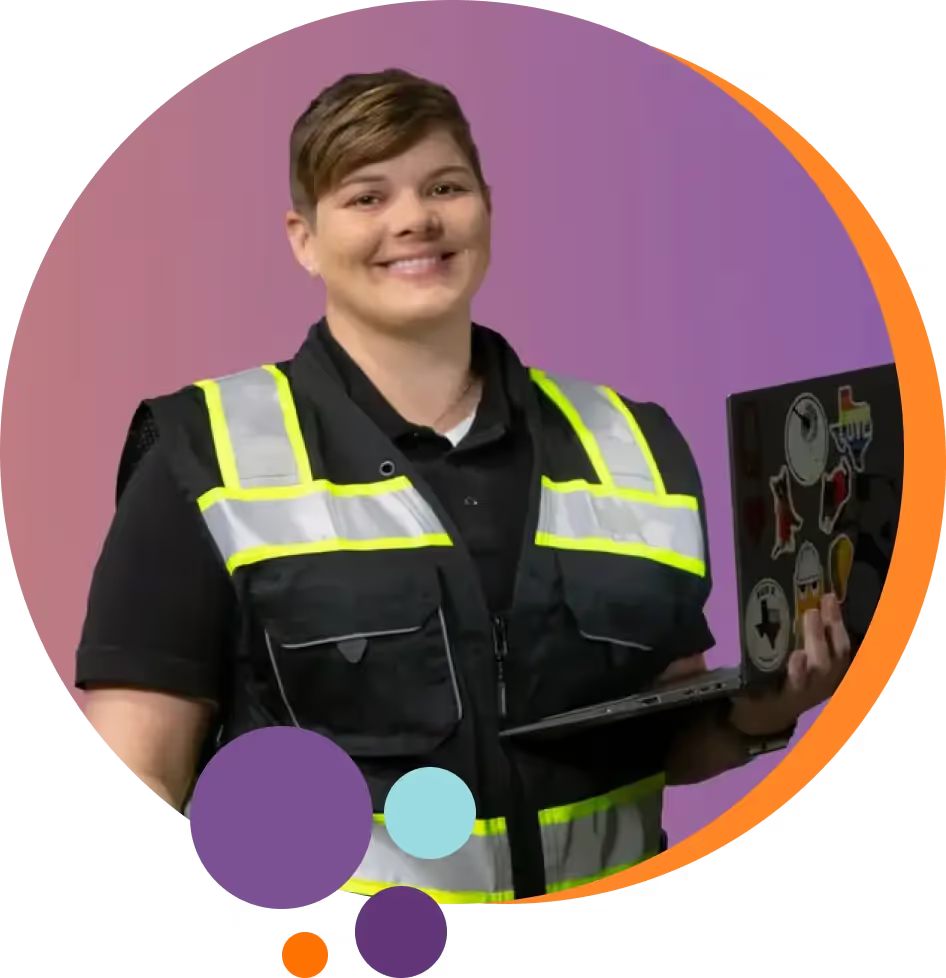Although the carpenter industry is concentrated in California, New York, Florida, and Texas, it plays a prominent role in all the other states as housing is required no matter where you are.
Key Takeaways
Carpenters should have plenty of job options in the near future. The United States is predicted to require 89,401 carpenters over the next ten years. This figure is based on the hiring of 83,801 new carpenters and the retirement of 5,600 current carpenters.
Get the Inside Scoop on Booming Technician Careers – Free Webinar!






Get the Inside Scoop on Booming Technician Careers – Free Webinar!






Get the Inside Scoop on Booming Technician Careers – Free Webinar!






Get the Inside Scoop on Booming Technician Careers – Free Webinar!

Get the Inside Scoop on Booming Technician Careers – Free Webinar!






Want to Become an Amazon Maintenance Technician?

Get the Inside Scoop on Booming Technician Careers – Free Webinar!






Get the Inside Scoop on Booming Technician Careers – Free Webinar!






Get the Inside Scoop on Booming Technician Careers – Free Webinar!






Looking to obtain certification as a carpenter in Arizona?
Unmudl has the course you need!
We help people like you find new careers they love!

Requirements for becoming a carpenter in Arizona
In the United States, certification in the field of carpentry is not necessary. The majority of professional carpenters began their careers as apprentices. You must simply have a GED or high school certificate, be at least 18 years old, and be a U.S. citizen or have the authorization to work in the United States to be eligible.
Having said this, it is highly recommended that you get a quick certification under your belt to not only increase your chances of employment but also to make more income. The better pay is usually given to the most experienced or the most technically qualified carpenters.
Apprenticeships and two-year certificate/diploma programs in carpentry at a community college or a technical school are both aimed to familiarize students with hand and power tools, as well as improve safety awareness and fundamental skills in handling, measuring, modifying, and assembling materials.
These certifications also offer specialization besides general carpentry such as cabinets and floor covering.
Carpenters may opt to get expertise in a variety of construction fields in order to advance to the position of carpentry supervisor or general construction supervisor. They could also get a construction management associate's or bachelor's degree to prepare for higher-level roles.
Several industry associations offer possibilities for continuing education and optional certification. In the field of carpentry, the following two are the most well-known:
- The United Brotherhood of Carpenters and Joiners of America
- The National Association of the Remodeling Industry (NARI)
Among the certifications offered are:
- CR/CRS/CRA (Certified Remodeler, Certified Remodeler Specialist, Certified Remodeler Associate)
- CKBR (Certified Kitchen and Bath Remodeler)
- MCR (Master Certified Remodeler)
- UDCP (Universal Design Certified Professional)
- CLC (Certified Lead Carpenter)
- CRPM (Certified Remodeling Project Manager)
Job outlook for carpenters in Arizona
Carpenters' employment is expected to grow 2% between 2020 and 2030. Carpenters are expected to have 89,300 job opportunities each year on average during the next ten years. The majority of those opportunities are projected to emerge from the need to replace people who change occupations or leave the workforce for other reasons, such as retirement.
- Number of Jobs, 2020: 942,900
- Annual Job Growth Rate: 2.0%
- Estimated Job Openings per Year: 89,300
Expected salary in the state of Arizona for Carpenters:

Typical salaries in Arizona by cities

How to become a carpenter
As mentioned earlier you don’t need a degree to become a carpenter in Arizona. Even if you have just a high school certificate or a GDE you are ready to enter the industry workforce.
There are some smart choices that will help things if you follow our suggestions below:
While in High School
Carpentry is one of the trades where gaining immediately relevant experience while still in high school is quite easy. Courses in the following categories will help you transfer into a carpentry apprenticeship or technical school program more smoothly:
- Drafting
- Carpentry, Woodworking, or Shop Class
- Mathematics: algebra and geometry
- Mechanical Drawing
Aside from studying classes like these that are relevant to a carpenter's day-to-day work, it's also crucial to pay attention in English class, since good communication skills will come in handy when reading blueprints, installation instructions, and safety information.
Good communication skills also aid carpenters in giving clear instructions to subordinates and interacting comfortably and efficiently with clients and coworkers. Learning a second language, particularly Spanish for aspiring carpenters in the United States, will also help you communicate with employees who do not speak English as their first language.
Related: Can You Attend Community College While in High School?
.jpg)
Certification from a community college
These programs are ideal for people who want to go beyond the fundamentals of carpentry.
The courses offered at community colleges are designed to satisfy the demands of companies looking for carpenters with a solid foundation across a wide range of applications, including energy efficiency, environmental sustainability, business skills, and entrepreneurship.
Everything from construction safety and shop equipment operation to building science, floor and wall framing, external finishing, and much more is covered. To get ahead of the field this is your best bet.
Here are some of the community colleges that offer carpentry certification in Arizona with one option for a fast track to becoming a carpenter.

PIMA Community College
A fast track to becoming a carpenter
Pima Community College (PCC) is one of the most well-established and respected community colleges in Arizona. It is a public community college having a college district with five campuses, four education centers, and many adult education learning facilities that serve the Tucson metropolitan area.
The college offers approximately 144 programs in both traditional and online formats. Workforce training, non-credit personal interest seminars, and post-baccalaureate credentials are all available at the college.
PCC is one of the country's largest multi-campus community colleges, with a relative rating ranging from fourth to tenth, and is accredited by the Higher Learning Commission.
The Fast Track Course
The fast track course is designed to get you a certificate and a job as soon as possible. The duration of this accelerated learning program is only 16 weeks with 20 hours of study per week.
At the completion of the program, you will be able to:
- Explain the carpentry trade's history and the necessity of safety in the building sector.
- Explain the terms that are typically used when talking about wood and lumber, as well as the many types of fasteners and adhesives.
- Demonstrate how to use hand, portable power, and stationary power tools correctly.
- Demonstrate how to design out and build various structural systems and floor assemblies.
- Demonstrate how to frame a wall and a ceiling.
- Describe the words used in roof framing as well as the various types of materials employed.
- Explain how to install several types of fixed, sliding, and swinging windows and doors, as well as outside doors.
In addition, the work activities that you will be able to put on your resume are
- Review blueprints or specifications to determine work requirements.
- Measure materials or objects for installation or assembly.
- Select construction materials.
- Select construction equipment.
- Clean equipment or facilities.
- Finish concrete surfaces.
- Move construction or extraction materials to locations where they are needed.
Cost and financial aid
Total cost of the program is $1,873.75 (Excluding Tax)
Note: Course Fees are inclusive of text, laboratory materials, and certification tests (NCCER Core Certification and Carpentry I).
For students who apply and qualify, financial aid is available to cover tuition, fees, books, and supplies, as well as the costs of accommodation and transportation. The Financial Aid Office at the College is always ready to assist you with the application process, understanding your financial aid awards, and staying on track to remain eligible for aid.
Student Body
- Undergraduate Students: 17,141
- Full-time 26%
- Part-time 74%
- Students who received Pell grant 57%
- Race/Ethnicity
- Hispanic 49%
- White 36%
- Black 5%
- Unknown 3%
- Asian 3%
- American Indian/Alaska Native 2%
- Two or more races 2%
- Acceptance Rate: 100%
Location
Pima Community College has campuses and facilities all across the Tucson area. Most Pima students attend classes on multiple sites and are welcome to use student services centers, libraries, and other resources from any of the below campuses/centers.
- Campuses
- Centers
- Adult Learning Centers
- Aviation Technology Center
- Davis-Monthan Air Force Base
- PCC at Santa Cruz County
City Demographics
- White: 72.05%
- Other race: 10.17%
- Two or more races: 5.44%
- Black or African American: 5.20%
- Native American: 3.68%
- Asian: 3.25%
- Native Hawaiian or Pacific Islander: 0.22%
Weather in Tucson
Tucson is a bright and sunny place which has a hot desert climate, with two distinct seasons: hot summer and a mild winter. Tucson receives an average of 10.61 inches (269.5 mm) of precipitation per year, with the majority of it falling during winter Pacific storms and summer North American Monsoons. The months of autumn and spring are often sunny and dry.
Over the course of the year, the temperature typically varies from 42°F to 102°F and is rarely below 33°F or above 107°F.
Attractions/ places to go
Tucson is one of the United States' oldest continuously inhabited towns, so there's plenty to see and do in this desert metropolis.
The distinctive giant saguaro, North America's largest cactus, is found in Saguaro National Park to the east and west of the city. Only portions of Arizona and California have these plants. Saguaro National Park, which protects over 1.6 million of these gorgeous giants, will give you a good look.
From the Pima Air and Space Museum to Sabino Canyon, the city is surrounded by many places that will entertain you.
Other Non-Fast Track Options

Gateway Community College
GateWay Community College has a history of innovation, foresight, and responsiveness to the needs of our community: it was Arizona's first technical college; it was the first to use community advisory committees; it was the first to tailor courses to the needs of business and industry; it was the first to offer classes at off-campus locations, and it was even the first to install a computer.
Originally known as Maricopa Technical College, it has grown from humble beginnings in the former Korrick's Department Store downtown to today's GateWay. It also has one of the best carpentry school in Arizona
The institution provides more than 160 degrees, certificates, trade, technical, and workforce training programs to meet your life, your budget, and your future objectives. "Education that works, so you learn more and live better," is their motto for a reason.
Certificate in Carpentry
Carpentry is the industry's largest construction trade, ensuring a steady stream of work. Carpenters employ a variety of tools and materials to create houses, skyscrapers, bridges, tunnels, highways, and other structures.
From reading blueprints to erecting and removing forms, the job entails every step of the construction process. Many carpenters go on to become carpentry supervisors, general construction supervisors, or independent contractors as a result of their significant career progression options.
This program is executed through Gateway Community College’s partner in carpentry - Southwest Carpenters Training Fund (SCTF)
Cost and financial aid
The cost to attend Southwest Carpenters Training Fund ranges from $250 to $1,500 depending on the qualification, with a median cost of $1,500.
For the Carpentry course specifically, you will have to get in touch with Southwest Carpenters Training Fund at (602) 272-6547 for cost and other details.
Related: Do Community Colleges Have Payment Plans?
Student Body
- Undergraduate Students: 4,162
- Full-time 30%
- Part-time 70%
- Students who received Pell grant 58%
- Race/Ethnicity
- Hispanic 48%
- White 27%
- Black 12%
- Asian 3%
- American Indian/Alaska Native 3%
- Two or more races 3%
- Unknown 2%
- Acceptance Rate: 100%
Location
Another first for GateWay Community College is the merger of its Maricopa Skill Center division and the merging of the SouthWest Skill Center under the college, bringing all clock programs under one roof. There are now three campuses and three extension sites for the college:
- 18th Street at 555 N. 18th Street, Phoenix
- Central City Campus at 1245 E. Buckeye Road, Phoenix (formerly Maricopa Skill Center)
- Deer Valley Campus at 2931 W. Bell Road, Phoenix (formerly Maricopa Skill Center-Northwest)
- Surprise-GateWay Training Facility is a partnership between the City of Surprise and the GateWay Community College to hold Water Resource Technologies and Occupational Safety & Health classes.
- Southwest Skill Center at 3000 N. Dysart Road, Avondale (formerly under Estrella Mountain Community College)
- Washington Campus at 108 N. 40th Street, Phoenix
City Demographics
- White: 72.87%
- Other race: 10.01%
- Black or African American: 7.12%
- Two or more races: 3.91%
- Asian: 3.79%
- Native American: 2.08%
- Native Hawaiian or Pacific Islander: 0.21%
Weather in Phoenix
Summers in Phoenix are hot and dry, winters are mild, and the weather is typically clear all year. The temperature normally ranges from 45°F to 107°F throughout the year, with temperatures rarely falling below 37°F or rising over 112°F.
Attractions/ places to go
Greater Phoenix, as one of the major cities in the United States, offers a wide range of attractions, including food, nightlife, the outdoors, and more. If you're not sure where to begin, we've compiled a list of the top sites that visitors and locals alike should tick off their bucket lists in Greater Phoenix.
Discover the Sonoran Desert's urban sprawl, including hiking, museums, and more. Camelback Mountain is another attraction. The panoramic view from the "hump" of this iconic monument, known for its resemblance to a kneeling camel, is worth the effort of ascending Echo Canyon and Cholla, two difficult hikes.
The iconic Papago Park, located only minutes from downtown, features red sandstone buttes circled with paths, stunning views from the interesting rock formation atop Hole-in-the-Rock Trail, and two of the city's major attractions: the Desert Botanical Garden and the Phoenix Zoo.
Fishing on seven acres of stocked lagoons, the Hall of Flame Museum of Firefighting, and the beautiful Papago Golf Course, located at the base of Papago's buttes, are all popular attractions in the park.

Maricopa Community College
Maricopa County Community College System District (MCCCD), often known as Maricopa Community Colleges, is an Arizona community college district based in Tempe. It is one of the largest in Maricopa County, Arizona, serving around 220,000 students each year.
The district represents Maricopa County, which encompasses and surrounds Phoenix and is the state's most populous county. The administrative headquarters of the district is in Tempe, Arizona (east suburban Phoenix).
MCCCD offers programs leading to a two-year associate degree, occupational certificates, online classes, and dual enrollment programs, as well as online classes and dual enrollment programs. The carpentry classes in Phoenix are also offered on the same campus.
Certificate of Completion (CCL) in Construction Trades: Carpentry
The course is offered through Mesa Community College which is part of the Maricopa Community College District and is intended to provide carpentry construction workers with information, safety, and skills. This curriculum provides an overview of common construction abilities, such as safety, codes, building drawings, tools, walls, flooring, and roof systems.
Students can work as carpentry technicians on both residential and commercial construction sites. It is possible to obtain a Certificate of Competency (CCT) in Construction Trades: Carpentry. There is also a second Carpentry CCL and an Associate in Applied Science (AAS) in Construction Technology.
The course can be completed in 16 weeks.
Cost and financial aid
Cost Per Credit/Clock for Mariposa is $85 per credit hour and the total credits required for the certificate are 16 credits. This brings the fees to $1,360.
Financial Aid is available to all residents of the state. The financial services department at Maricopa Community Colleges is available to help you navigate through all of the information so you can make financially responsible decisions.
Student Body
- Undergraduate Students: 16,010
- Full-time 36%
- Part-time 64%
- Students who received Pell grant 47%
- Race/Ethnicity
- White 44%
- Hispanic 32%
- Black 6%
- Asian 4%
- American Indian/Alaska Native 4%
- Two or more races 4%
- Unknown 3%
- Non-resident alien 2%
- Acceptance Rate: 100%
Location
For more than 40 years, Mesa Community College has delivered excellent transfer, career, and service programs to the East Valley in the Phoenix Metro region. Their Southern and Dobson campus, which opened in 1965, is a hub for education and community involvement. With nearly 29,000 students, MCC is the largest of the ten Maricopa Community Colleges.
The Red Mountain campus is located in northeast Mesa on 98 acres of gorgeous Sonoran Desert. This comprehensive campus, which opened in 2001, provides an intimate college setting with sophisticated classrooms, wireless technology, and outdoor teaching spaces. The focus of Red Mountain's course offerings is on university transfer programs.
Saguaro cactus, 800-year-old ironwood trees, ocotillo, ephedra, jojoba, creosote bush, and many other spectacular trees, plants, perennials, and annuals may all be found on the campus. There are also roadrunners, quail, rattlesnakes, desert cottontails, and coyotes on campus.
City Demographics
- White: 81.54%
- Other race: 5.44%
- Black or African American: 4.18%
- Two or more races: 3.53%
- Native American: 2.62%
- Asian: 2.23%
- Native Hawaiian or Pacific Islander: 0.46%
Weather in Mesa, Arizona
Summers in Mesa are hot and dry, winters are mild, and the weather is typically clear all year. The temperature normally ranges from 43°F to 106°F throughout the year, with temperatures rarely falling below 35°F or rising over 111°F.
Attractions/ places to go
The Mesa area is brimming with excitement, with a plethora of educational, cultural, and outdoor attractions. Mesa has a bit of everything, from interactive museums to Broadway musicals and old west villages.
The area's most popular natural features, including the Superstition Mountains, Apache Trail, Salt and Verde Rivers, Usery Mountain Regional Park, and surrounding lakes, are all within easy driving distance. Explore the enigmatic Superstition Mountains or take a tour on the Desert Belle or the Dolly Steamboat on Saguaro Lake and Canyon Lake.
Final Thoughts
To perform construction projects and other manual chores, carpenters use a wide range of mathematical skills.
Carpenters all around the country dispel the idea that they're more brawn than brain by using fundamental math to determine floor space and wall heights, as well as more difficult trigonometric calculations to make correct angle cuts. To do their tasks properly, they rely on more than just muscle and stamina.
Carpenters' employment is expected to expand 2% between 2020 and 2030. Despite that job growth, carpenters are expected to have 89,300 job opportunities each year on average during the next ten years. It is a good job to get into that pays well.







